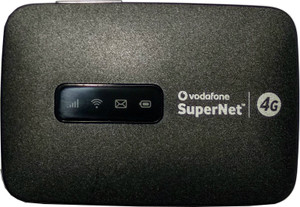The fastest internet for rural areas is Starlink or Viasat, although Viasat’s rural internet speeds are more dependable and far more expensive. Starlink advertises internet speeds up to 500 Mbps while Viasat advertises 100 Mbps speeds.
Living in a rural area or in the middle of nowhere and craving for internet? Worry less-Read 7 options to get internet in the middle of nowhere that may make those fast connections a reality.
Viasat places at No. 2 in the Best Satellite ISPs of 2022. While satellite internet service can sometimes be slower and less reliable than other types of internet, like cable, fiber, or DSL, it’s sometimes the only option for people who live in rural areas and don’t have access to other types of internet services
How To Get Fast Internet In The Middle Of Nowhere
1. Try Elon Musk’S Starlink Network
SpaceX’s Starlink hardware includes a satellite dish and router, which you’ll set up at home to receive the signal from space. Just like existing providers of satellite internet like HughesNet or Viasat, Starlink wants to sell internet access — particularly to people in rural areas and other parts of the world who don’t already have access to high-speed broadband.
Starlink is now available in 32 countries around the world. People ordering from areas marked “available” will have their Starlink shipped immediately → https://t.co/slZbTmHdml pic.twitter.com/CecM1pkf5D
— SpaceX (@SpaceX) May 13, 2022
As of May 2021, only 3.6% of the planned satellites are in orbit, leaving quite a few more to go before it’s finished.
2. Using Gray Data Cards, With Some 3G Technology Or More With Unlimited Availability.
A Datacard is an electronic card for data operations (storage, transfer, transformation, input, output).

If your location does not have a good signal, you can use a Wilson Electronics amplifier and antenna (available in GSM, CDMA, cellular, and PCS bands) to cover your location up to 50 km away. Send signals. Although 3G isn’t available nearby, 2.5G technologies like EDGE or 1X RTT are faster than dial-up connections.
3. Try Using A Broadband Address Checker
- Use of this checker is subject to Ofcom’s terms of use. Please enter your postcode to see the broadband services that are present at your location, …
4. Using 3G To Get Internet In The Middle Of Nowhere
- 3G refers to the third generation of cellular technology that enables mobile telephony.
- The third-generation standard follows two earlier generations that were deployed on mobile networks and across mobile phones.
- It is supported by many advanced phones, some of which also take advantage of its bandwidth for data transfers and Internet browsing.
- Besides bringing high-speed Internet to cell phones, many netbooks and tablet computers can access the 3G network.
- These devices are ideal for business travelers and mobile devices.
- While 3G offers high speeds, many user agreements limit the amount of data that can be transferred in a given month.
- Other plans offer unlimited data use and can serve as a primary Internet connection for users without any other option.
5. Using Wireless Bridge To Transport Internet Wherever Broadband Is Available
- If you can’t see point-to-point visually, do an RF geodetic survey, select or build a tower, and buy bridge equipment.
- Cisco Systems Aironet or Motorola Canopy has high-quality canopy kits.
- With Aironet 1310Gs and 24d HyperLink antennas, it is possible to get at least 35km of the direct link without loss of packet, nominal 54 Mbit / s, and 23 ms point-to-point latency according to FCC rules (EIRP 36 dBm bad). ).
- Umbrellas with oblique reflectors can reach up to 20 km, but more than 36 dBm is fine.
- Canopy experiences less distraction.
- There may be a signal loss factor and some interruptions that prevent LOS and Fresnel transmission.
6. Digital Subscriber Line (DSL)
- This Is One Of The Most Common Forms Of Residential High-Speed Internet Service IS
- Through A Cable Provider, cable Internet Is Carried Over Cable Tv Lines, Which May Not Reach Some Remote Areas.
- While These Customers Can Use A Satellite Dish Or Antenna To Receive Television Programming, They Miss Out On Cable Internet.
- A Digital Subscriber Line (Dsl) Offers A Good Alternative.
- Dsl Is Carried Over Telephone Lines And Is Much Faster Than A Standard Telephone-Based Dial-Up Connection, Though Often Not Quite As Fast As Cable-Based Internet.
- For Areas Where Phone Lines Are Installed But Cable Lines Aren’t, Dsl Is An Easy And Fast Way To Get Online.
7. Using Mobile Internet To Get Internet In The Middle Of Nowhere
- Mobile internet is provided by cellular network providers like Verizon Wireless, AT&T, Sprint, and T-Mobile.
- The internet connection is transmitted from cellular towers to your internet device, so mobile internet is available anywhere there is a signal from that specific cellular provider.
- Mobile internet usually comes in two forms: smartphone hotspots and mobile hotspots.
- Smartphone hot spots can be set up through your smartphone, which accepts the connection from the cellular towers and then relays it to your computer or tablet.
- Smartphones like the iPhone and Android are capable of doing this by default.
Summary: Comparison of Satellite Internet Provider Comparisons
| HughesNet | Starlink | Viasat | |
|---|---|---|---|
| Max speeds | 25Mbps download, 3Mbps upload | 50-500Mbps download, 10-40Mbps upload | 12-100Mbps download, 3Mbps upload |
| Lowest monthly cost | $45-$140 | $110 | $70-$300 |
| Regular monthly rate | $65-$160 | $110-$500 | $100-$400 |
| Contract | 2 years | None | 2 years |
| Monthly equipment costs | $15 or $450 one-time purchase | $599 one-time purchase (or $2,500 for Premium) | $13 or $299 one-time purchase |
| Data allowance | 15-100GB | Unlimited | 40-300GB |

